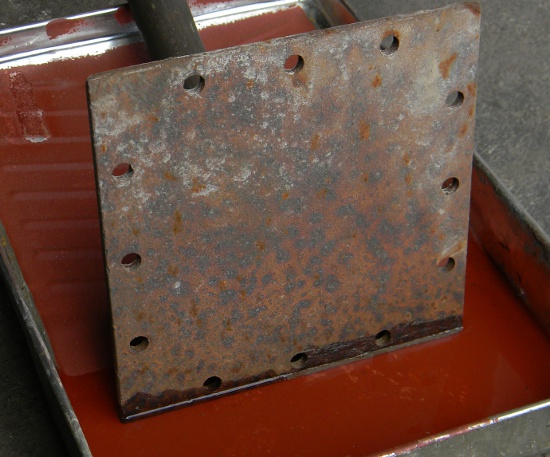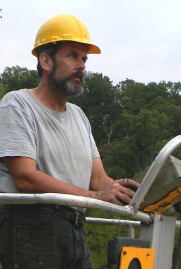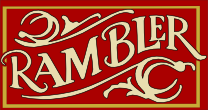You are hereHalting metal rust on railroad and historic objects
Halting metal rust on railroad and historic objects
___________________________________________________________________
Skilled labor in America isn't cheap. I'm aware of the numerous expenses my clients face, my charges are just part of many. This creates an ongoing tension, between charging enough to support my family, and having an affordable price for my services. Not one I lose sleep over, but close. So it is that when I paint most things, I want the coating to last. I'm ever looking for cause and effect relationships in regards to things that could make a finish fail prematurely.
One of the most serious threats is water. What I see often is water at the -bottom- of an object causing problems. Just today I saw wooden window frames on a house rotted at the bottom. These frames are about four feet tall, there are about twelve along one wall. As far as I can tell, they are all rotted at the bottom, about five inches on every board is disintegrated. That's twenty four boards, on an otherwise reasonably well preserved wall.
A year or two ago, I saw the same thing on a red wooden caboose. It apperaed to be painted with a quality red latex paint. This paint was still glossy and vibrant in color, but the bottoms of many boards had paint peeling. On a recent paint project, KXHR 6, a green metal passenger car, I also saw evidence of water at the bottom of an object causing problems. Below is a picture of what the lower edge of a metal panel looks like. This picture is actually of a trim piece, but the effect is identical.You'll see the large rivets used to join this plate to the car. The rivets don't allow much expansion, but the area between the rivets has pushed out. I think that this is from water at the bottom edge, not behind; because this expansion is in may places on the car, and only at the bottom edge. There are other rows of rivets on the same plate, above the bottom row. These other rows don't have the expansion. I tried to contemplate other ways water might have got to the back side of the metal. Maybe the car is-was heated in winter. The warm moist air hits the cold metal car body, condenses, then runs down and is trapped where the plate is riveted on. That's not too far fetched, but why would it only be the bottom row? Same question for most other ways that the water might be getting to the backside.

I was convinced that water hanging on the bottom edge was the culprit; but what to do about it? I wondered if one could make something called “mini fringes”. I once was told that fringes on a leather jacket aren't just for style, but are there to draw water away from the rest of the jacket. That makes sense, if you consider that the fringe is the lowest point. These mini fringes could be made of thin metal wires, about an inch and a half long. The wires would all be arranged in an attachable strip, which would be fastened to the back of the bottom edge that you wanted to protect. The wires could all be sort of S shaped, that is, they curve away from the outer visible edge, then curve back down, where the water would drip off. This would hide the fringe from sight.
There are major problems, however. If it were made as a continuous strip, could one be sure that it was adhered tightly for it's entire length? Just one gap would mean a failure at that point. Just how does one reliably stick this strip to rusty metal? As I was thinking on these things, I realized I was working on the wrong problem. The problem isn't that the water is there, it's that the water creeps. As I was thinking of a test to prove that water will actually climb straight up a rusty surface, I also might have stumbled on the solution.
See the picture below. This is one piece of rusty steel. On the right side of the bottom edge, bearing grease has been applied. Notice how the water climbs on the left, where there is no grease, but not where the grease is. I think that this -is- the solution, but only using something more durable than grease. What I don't show is a picture from a half hour later, where the grease has turned white and soft from being in the water.

I hope that this idea can help with historic preservation in many places.
This research is primitive compared to other projects at Gulf and Ohio. It's nice to work at a place where ideas are listened to.
Gulf and Ohio:
 link to
link to



